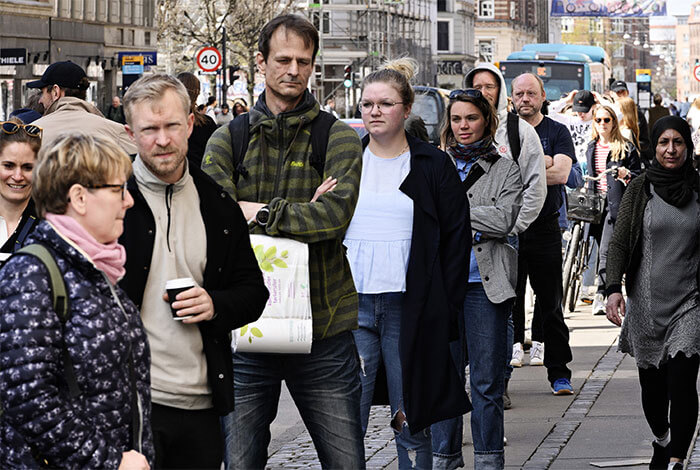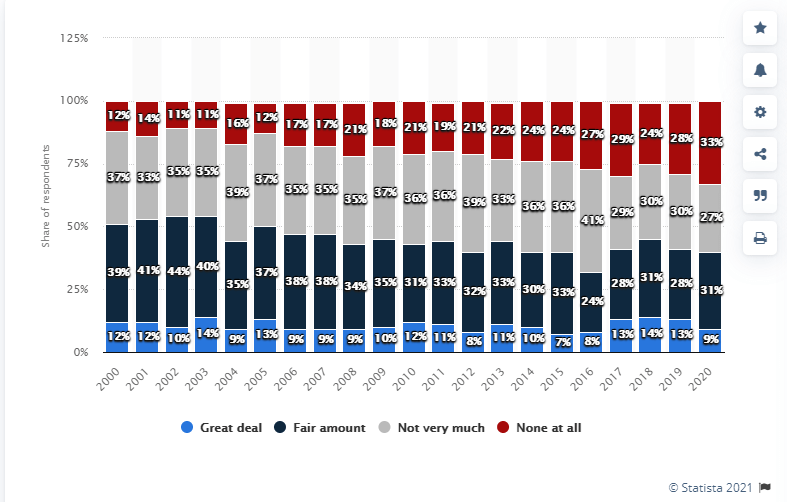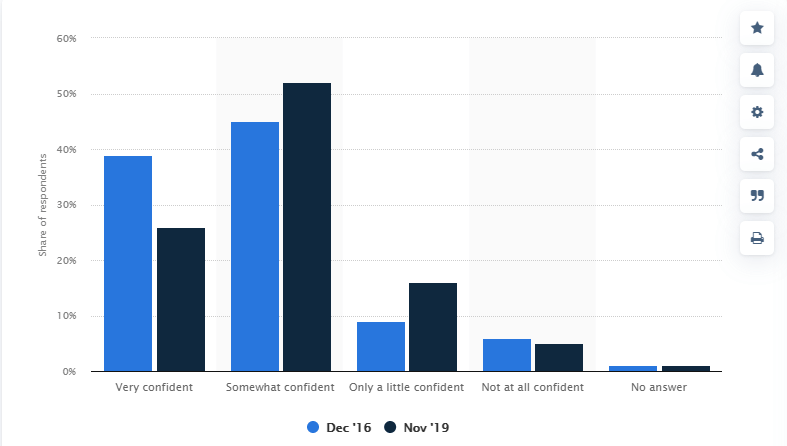The concept of fake news has always been a staple of culture, but it became part of the popular lexicon during the Trump administration in the United States.
Media giants came under criticism for skewing the narrative to meet a specific agenda. As a result, news agencies and media companies had to invest in fact-checking technology to authenticate every news item, including images, statistics, and video content.
Since most news companies use images to report the news, they need AI-powered fake photo detection tools to see if someone has doctored the photo or not.
This article explores how to detect a photoshopped image and also highlights how a fake picture can fuel fake news reporting.
How do fake photos fuel the spread of fake news?
In a DIY social experiment conducted during the pandemic, photographers from Ritzau Scanpix showed ways images can mislead news consumers.
Although the photographers captured the same subjects from multiple angles using different lenses, the resulting pictures told contrasting stories.

A photographer takes pics of people in public from 2 perspectives and it shows how easily the media can manipulate reality. There is no social distance during the coronavirus pandemic.
Let’s take a look at the situation from the other side:

This experiment exposed one of the ways that news sites and yellow pages can manipulate their audience.
But that’s not even half of it; let’s explore other ways a fake image can propel fake news stories.
- Evoke emotions
News websites rely on words to convey their narratives, but a striking image drives home the point faster because humans are visual beings.
If you see an image of a mother sitting in a dilapidated house with a crying baby in her arms, the last thing on your mind would be to verify if it is a fake image.
Such fake photos force readers to empathize with the people in the picture and invest in their story. Since the reader is now emotionally invested, the veracity of the facts becomes secondary.
- Reinforces prejudices
During the BLM protests in 2020, fake news portals worked overtime trying to implicate the protestors in the looting. Sometimes, they photoshopped gang-related tattoos on the body of protesters and labeled them “marauders.”
- Exploit the consumer’s POV
Most people are suspicious of stock images and high-res photos because they look staged. But when a picture comes from a low-res camera, like an iPhone or Android, it feels like a regular citizen captured it. And since the fake image looks natural and ‘unstaged’, it helps drive the fake news agenda to the reading audience.
- Fosters microtargeting
Fake news agencies often target conspiracy theorists — most of whom are on Reddit and 4Chan. These niche consumers peddle in rumors without spending ample time to research their sources. As a result, it is easier to target them with a photoshopped image or a fake photo.
- Provides ammo for pseudo-experts
In the age of social media, many self-proclaimed experts share their content with unsuspecting consumers. If the reader trusts the so-called expert, they won’t bother to fact-check their images. After all, why would an expert need to manipulate images?
Viral photos that were fake
Sometimes, you see a photo and think: “Is this image real or fake?”
We have all pondered on this question several times. To help you understand how fake images impact the spread of fake news, let’s check out some viral photos that were actually fake.
This picture of a Frozen Venice is actually an edit of the Lake Baikal in Russia.
The “Frozen Venice” picture went viral because it showed a part of Venice that most tourists could not recognize — mainly because the image is fake. The artist superimposed a picture of the frozen Lake Baikal on Venice street.

To be fair, this image adds an extra layer of beauty to the already enchanting city of Venice. Unfortunately, this image can cause irreparable harm in the hands of fake news merchants.
Climate change deniers could use this photo as propaganda to repel the fact that the globe is getting warmer. After all, Venice now looks like a town in the ice-filled Baikal region.
Sharks don’t hang out in hotel lobbies!
Even though sharks don’t hang out in hotels (obviously), pseudo-experts can use this image to spread fake news.
For instance, climate change advocates can stir people into action by claiming that temperatures have risen so high that sharks now have to swim into hotels to shelter from hurricanes.

In 2020, Trump ran a Facebook ad using a 2014 protest photo from Ukraine.
During the protests in 2020, President Donald Trump’s Facebook account posted a campaign ad that depicted the anti-police violence from protesters. However, the image from the ad came from the 2014 Euromaidan protests in Ukraine. Whether this fake news content was a mistake or not, such a reputable institution could have benefited from a fake photo detection software.
Why should news media websites check photo authenticity before publication?
Journalistic integrity demands that publishers should detect fake photos online before sharing them with their consumers.
Beyond journalistic integrity, here are other reasons why news sites should avoid fake photos like the plague.
- Avoid litigation
According to Reuters, a young man from Kentucky sued CNN for defamation of character after the world-renowned news network posted an image of him allegedly confronting a native-American activist. The 275 million USD lawsuit is still pending.
If you want to avoid these massive lawsuits, learn how to detect a fake photo.
- Protect your company’s reputation
According to Statista, people are losing trust in news websites because of deep fakes and manipulated images. Consumers now consider most news channels as fake news or biased.

Source: Statista
The “fake news” label will besmirch your reputation, no matter how trivial the case. Once consumers discover that you have reported the news using manipulated fake images, they will approach every piece of reporting with skepticism.
- Curb mass misinformation
Experts from Cambridge Analytica claim that fake photos and news materials swayed the results of the 2016 election. Also, the COVID-19 pandemic caused mass hysteria because news media websites spread unverified images and information.

Source: Statista
Besides, data from Statista shows that confidence in online news sites is waning due to misinformation.
Nevertheless, news agencies can maintain a stellar reputation by conducting additional image and fact checks before reporting.
How to check if this image is real or fake
Differentiating a fake photo from a real one has become a herculean task as advanced online photo manipulation tools are now available online. But news agencies that know how to tell if an image is fake can protect their reputation and maintain readers’ trust.
So, let’s check out how to see if a photo is fake or real.
- The eye test — review the images for irregularities and skewed perspectives. A microscope can help you spot rough edges and non-matching color schemes.
- Tin Eye — searches images on multiple sources and uses the metadata to find the original.
- Google Reverse Image Search — allows users to upload images to verify their authenticity.
- AI-powered tools — like Jigsaw’s Project Assembler — allows users to fact-check images using machine learning algorithms. This experiment is no longer available, but similar products exist on the market today.
Fake photo detection using AI, ML technologies
As we mentioned in the previous paragraph, modern tools for photo verification use artificial intelligence and machine learning technologies to provide accurate image detection.
Here is how to tell if a picture is fake using a ML-based fake photo detection tool:
1.Upload the image.
2.Photo validation process using AI, ML technologies:
- Testing pixels for authenticity. In other words, the solution detects any changes in a pdf/jpg file. This product answers the question “does this file was photoshopped or not
- File metadata checking. Extract metadata recorded behind the files, ranging from file size, data, geolocation and modification history to the software tools used to create them
3.The results show if the image is fake or real.

Metadata checking result example
Use ML-based fake photo detection together with other tools to authenticate images for your news websites.
If you run a news organization, you realize all too well that fake photos can be prominent drivers of fake news. But there are too may consequences – from distorted narrative to the risk of million-dollar lawsuits.
Using a fake photo detector to authenticate pictures before posting them, you will protect your company’s reputation and avoid numerous issues.
References
- Perceived objectivity of mass media in the US 2020
- Confidence in ability to recognize made-up news US 2019
- The Big Viral Moments of 2020 That Were Totally Fake
- Explained: What is Fake news? | Social Media and Filter Bubbles
- Stopping the spread of fake news through photographs
- In the age of fake news, these digital watermarks could stop the spread of fake images
- How false information spreads
- Six Fake News Techniques and Simple Tools to Vet Them
- How is Fake News Spread? Bots, People like You, Trolls, and Microtargeting | Center for Information Technology and Society – UC Santa Barbara


